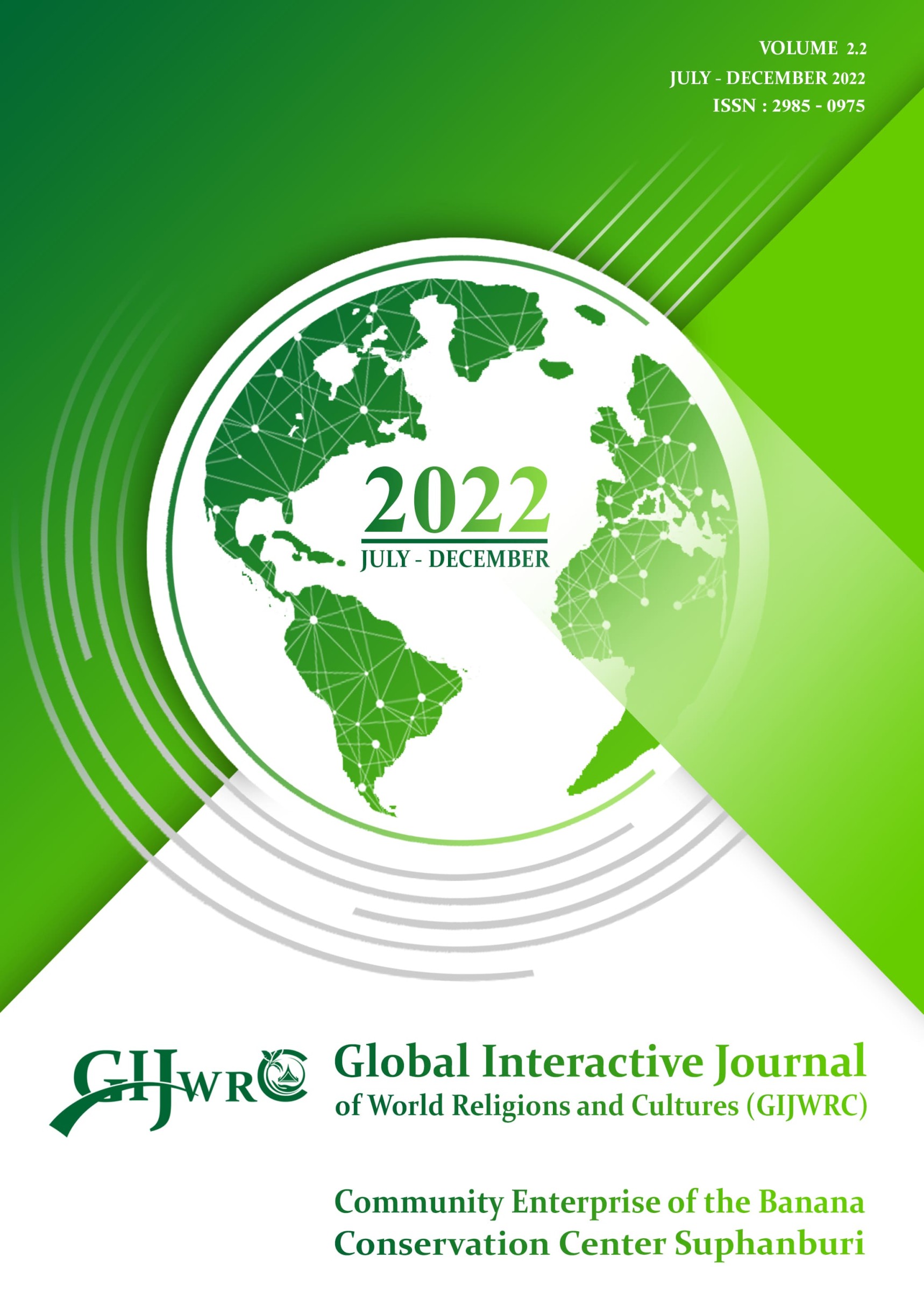AN INVESTIGATION ON BEHAVIOR COVERING THE CONNECTION BETWEEN THOUGHTFULNESS AND PERCEPTIVE RESILIENCY
Main Article Content
Abstract
The aim of the study is to explore the relationship between mindfulness and cognitive flexibility with an objective behavioural assessment. Mindfulness was assessed with breath counting (BC) accuracy recording on a computer program focusing on attentional self-awareness in the present. Ninety-four healthy volunteers from Thailand and the United Kingdom participated in a laboratory. Next, cognitive flexibility was measured by the Wisconsin Card Sorting Test (WCST) to assess shifting and inhibiting ability of executive functions. The WCST indicated perseverative behaviours and cognitive flexibility. The results showed BC accuracy negatively correlated with the score of failure to maintain set of the WCST, and uniquely predicted failure to maintain set score with hierarchical linear regressions. The findings suggest that the more individual pay attention to the self-awareness of the present, the greater their performance on inhibition tasks. Implications of the study contribute to the theoretical literature of mechanism of mindfulness on cognitive flexibility. Limitations of the study was discussed.
Article Details
References
Anicha, C. L., Ode, S., Moeller, S. K., & Robinson, M. D. (2012). Toward a Cognitive View of Trait Mindfulness: Distinct Cognitive Skills Predict Its Observing and Nonreactivity Facets. Journal of Personality, 80 (2), 255-285.
Baer, R. A., Smith, G., Hopkins, J., Krietemeyer, j., & Toney, L. (2006). Using self-report assessment methods to explore facets of mindfulness. Assessment, 13(1), 27-45.
Bishop, S. R., Lau, M., Shapiro, S., Carlson, L., Anderson, N. D., Carmody,
J. Devins, G. (2004). Mindfulness: A proposed operational definition. Clinical Psychology: Science and Practice, 11(3), 230-241.
Buddhadasa Bhikkhu. (1980). Anapanasati (mindfulness of breathing) (Bhikkhu Nagasena Trans.). (1st ed.). Sublime Life Mission.
Faul, F., Erdfelder, E., Lang, A. G., & Buchner, A. (2007). G* Power 3: A flexible statistical power analysis program for the social, behavioral, and biomedical sciences. Behavior research methods, 39(2), 175-191.
Figueroa, I. J., & Youmans, R. J. (2013). Failure to maintain set: A measure of distractibility or cognitive flexibility? Proceedings of the Human factors and Ergonomics Society Annual Meeting, 57(1), 828–832.
Gethin, R. (2011). On some definitions of mindfulness. Contemporary Buddhism. An Interdisciplinary Journal, 12(1), 263-278.
Heaton, R. K., & Staff, P. A. R. (1993). Wisconsin card sorting test: computer version 2. Odessa: Psychological Assessment Resources, 4, 1-4.
Khoury, B., Lecomte, T., Comtois, G., & Nicole, L. (2015). Third wave strategies for emotion regulation in early psychosis: A pilot study. Early Intervention in Psychiatry, 9(1), 76-83. doi:10.1111/eip.12095
Kopp, B., Lange, F., & Steinke, A. (2021). The reliability of the Wisconsin card sorting test in clinical practice. Assessment, 28(1), 248-263.
Lee, J. K., & Orsillo, S. M. (2014). Investigating cognitive flexibility as a potential mechanism of mindfulness in generalized anxiety disorder.
Journal of Behavior Therapy and Experimental Psychiatry, 45(1), 208-216.
Levinson, D. B., Stoll, E. L., Kindy, S. D., Merry, H. L., & Davidson, R. J. (2014). A mind you can count on: Validating breath counting as a behavioral measure of mindfulness. Frontiers in Psychology, 5, 1202. doi:10.3389/fpsyg.2014.01202
Lukseng, T., Siripornpanich, V., & Chutabhakdikul, N. (2020). Long-Term Vipassana Meditation Enhances Executive Function in Adult Meditators. Siriraj Medical Journal, 72(4), 343-351.
Martin, M. M., & Rubin, R. B. (1995). A new measure of cognitive flexibility. Psychological reports, 76(2), 623-626.
Moore, A., & Malinowski, P. (2009). Meditation, mindfulness and cognitive flexibility. Consciousness and cognition, 18(1), 176-186.
Murphy-Beiner, A., & Soar, K. (2020). Ayahuasca’s ‘afterglow’: improved mindfulness and cognitive flexibility in ayahuasca drinkers. Psychopharmacology, 237(4), 1161-1169.
Phra Thēpwēthī (Prayut). (1995). Buddhadhamma: Natural laws and values for life. State University of New York Press.
Purser, R. E., & Milillo, J. (2015). Mindfulness revisited: A Buddhist-based conceptualization. Journal of Management Inquiry, 24(1), 3-24.
Russell, T. A., & Arcuri, S. M. (2015). A neurophysiological and neuropsychological consideration of mindful movement: clinical and
research implications. Frontiers in Human Neuroscience, 9, 282.
Seddon, A. L., Law, A. S., Adams, A., & Simmons, F. R. (2021). Individual differences in media multitasking ability: The importance of cognitive flexibility. Computers in Human Behavior Reports, 3, 100068.
Spinelli, C., Ibrahim, M., & Khoury, B. (2022). Cultivating ambiguity tolerance through mindfulness: An induction randomized controlled trial. Current Psychology, 1-19.
Wimmer, L., Bellingrath, S., & von Stockhausen, L. (2016). Cognitive effects of mindfulness training: Results of a pilot study based on a theory driven approach. Frontiers in psychology, 7, 1037.


